Leaderboard
Popular Content
Showing content with the highest reputation on 06/01/2021 in Posts
-
Guys, it is an original Masayuki. Juyo would be the icing on the cake, but honestly: I don't need it. It would be nice if it would make it. If not, it still is a Masayuki blade of unique shape and with a cutting test. If I was to choose between the same blade without machiokuri but also without cutting test and my blade with cutting test but machiokuri I'd still always pick the one with the cutting test, even if this means due to machiokuri it won't make juyo. It adds so much more to its history and makes it very special not only among the Masayuki/Kiyomaro blades, but also among other blades of this period. The submission to juyo is mainly because it anyway already is in Japan and I won't be sending it over a second time, hence the try. I didn't find the blade, the blade found me, and I love it the way it is. @Tom Darling, I've asked @Markus and he specifically told me that currently there are no shortcuts to juyo. Even if there were, I do not understand the sense of this discussion. I'm following the process by the rules and did TH first to get papers confirming it is an original Masayuki blade (remember that was a big discussion to nearly all). At least to me there is no benefit in using a shortcut to juyo (if there were one) - imagine getting to see a blade with juyo but no TH papers, wouldn't that sound weird and potentially suspicous? And this way I have everything according to the rules and all properly documented.5 points
-
3 points
-
I am afraid that the interpretation is not correct. The linked source says "The value of works by such a master craftsman DO NOT CHANGE over time, BUT depending on the state of preservation, the value of OTHER SMITHS' WORKS that once cost tens of millions of yen may drop to several million yen.”.3 points
-
3 points
-
I don't spend much time on WAF nowadays. I guess you were VERY lucky I was on there that day, and sent you here. Who knows how this would have ended otherwise.3 points
-
Hi, Paul Martin is doing more on YouTube lately and wants to help the sword community and he also needs some help. I thought the nmb is a good Place to share this. Also you can win something nihonto related now. Also check out this video. A good way to protect a blade without saya . I did it myself and it’s easy to do but one should have some experience with swords.(have a feel for the weight) Stay focused while handling sharp swords I want to add. So don’t only subscribe but actually watch his videos if you want to support. (If this I the wrong section or already here feel free to move or delete)2 points
-
Excellent. I learned something about tosogu today. Thank you Luca and Mauro. Yes, that one was the Compton one. Nice tsuba. Thin too. Onin are much more ko-katchushi in feel than the Heianjo. I find the thin Onin, especially the sukashi ones, a side pleasure outside of my usual Owari and Higo interests. I have owned three of them and on/off regret having sold two of them. If I ever permit myself a larger less focused collection, one of theses thinner sukashi Onin will be on the short list of what I want to have.2 points
-
2 points
-
Hi friends, Steve M was (again) so friendly and translated the Nakago. 栗原昭秀作 敬呈 岩上金三郎君 昭和十二年一月二日 Kurihara Akihide saku Keitei Iwakami Kinsaburō kun Shōwa Jyūninen ichigatsu futsuka The middle line says, "Presented to Mr. IWAKAMI Kinsaburō". In other words, the middle line is the name of the person to whom the blade was given. Blade 21,9cm Kasane 6mm2 points
-
2 points
-
Been enjoying the book, thanks again @BIG. Fascinating discussion: "To smelt 10 tons of iron sand to approx. 2.5 tons of tamahagane, 12 tons of charcoal are needed.82 For the production of charcoal whole forests are cleared, which dramatically changes the landscape. Accordingly, Shichiro's report says: “Almost all the trees in the mountainous region have been felled except those belonging to the Tabe family, and it has become very difficult for the Torigami Branch Factory of Yasukuni Steel Production Company to obtain charcoal. However, the Tabe family has no problem supplying charcoal because they have vast lands and forests in the mountains. In the same way, iron sand can be extracted from their land.”83 Maxein, Otto. Samurai Swords for the Material Battle . Books on Demand. Kindle Edition. This came from a 1933 survey of available tamahagane, of which there was none to be found at the time.2 points
-
In the case of this blade it passed within 5 years so the same people were in charge. There is some misunderstanding above of the process. If you go and submit something that has existing papers yes they can find it and yes they do check. Knowing the blade's past history is important, especially with mumei blades, as the historical attributions provide a base from which to make current and future attributions. There were a lot more available to work with 300 years ago than now. So of course you want to have supporting documentation and to consider the history, especially if it's a judge like Honami Kochu. In the case of an overturned attribution, one would HOPE that it would happen. The idea that the NBTHK is a monolithic AI that popped into existence 60 years ago fully formed with no hope or need of change is flawed. It's composed of people and those people both improve their education as time goes on and more information and history will always come out. There is another fundamental misunderstanding about papers and attributions which I've talked about before, which is sourced in some Japanese scholarship, which is as the quality degrades the judgments can slide more and more sideways lacking any distinguishing characteristics. There is a Yoshimichi thread posted here and the blade is very characteristic so there is no other possible attribution if this was mumei, only whether or not it's genuine (I think it's ok). As you slide down the quality scale and erase characteristic features (both together) it is hoping for something unrealistic, that everyone will agree and assess the blade identically on eyeballing it. So if you have junk, you will basically get attributed to junk and the point is that which junk it is becomes neither meaningful nor possible to determine. Now on the higher end of things, a blade such as this Enju in question sometimes has some additional information that isn't shown on the NBTHK paper. It can have an old origami, it can have a sayagaki by Dr. Honma, and whenever it passed for whatever reason a conservative judgment was issued. I have seen Dr. Honma's sayagaki to Awataguchi Hisakuni and the NBTHK only accepted the blade as Awataguchi and nothing more. The blade was Juyo as Awatguchi Kunimitsu. So you have some span of disagreement here being sorted out, where it was Juyo at the time Dr. Honma was in charge and only settled as Kunimitsu then "downgraded" to a school attribution. Dr. Honma presiding over both sessions. So you can sit back and wring your hands over it or understand that you have a basic disagreement and the blade was not "downgraded" by changing it to Awataguchi school. It's done only to broaden the attribution to resolve disagreements. There is a mumei tanto attributed to Shintogo Kunihiro and when the blade's old Honami papers were discovered it was changed to Awataguchi Norikuni. Both attributions are suitable but Norikuni looks stronger and once the old judgment by Honami Koon was found then it is only appropriate to modify the attribution. More information SHOULD imply going back and reassessing and changing your opinion. Only an idiot refuses to change an opinion in the face of new information or ongoing study. So by this rule, you WANT judgments to both be conservative, and to be open to re-evaluation. Going to the Enju again, Enju is a conservative judgment that can be used to settle an issue about where the blade stands between Rai, Awataguchi and Enju. If it has properties of all schools and it is top class it could fall into any. An Enju blade is not necessarily inferior to a Rai blade. We do not know the state of polish or condition or history or information on the blade at the time of Juyo. We only know that at Tokuju the NBTHK had the opportunity to say den Awataguchi, Awataguchi, or den Awataguchi XXX, or Awatguchi XXX. The span of time is 5 years. They don't have to do anything or even pass it at Tokuju if there isn't any reason for it. There are other similar cases, but as the quality goes up, the chance of this happening goes down. Nobody should be mistaking Masamune for Masahiro but people saying Shimada or Masahiro that is acceptable. Because there isn't really any span of quality difference between those two and the styles overlap. Now, Norishige, Go, Masamune and Yukimitsu can overlap. The important thing is not getting mixed up between Shimada and Masamune or Norishige and Norikuni. From the first the school is the same but the quality and period are light years apart. For the second the period is close but the styles and school are far apart. If someone wants to say Norikuni and another wants to say Shintogo, those are a lot closer and depending on polish, condition, and how conservative you are being then you go one way or another. Last note: the entire concept of papering Hozon, Tokubetsu Hozon, Juyo and Tokubetsu Juyo has built into it this concept of re-study and revision. If a blade is good enough to promote it is definitely considered open to reassessment and new opinions. If you submit it covered with rust vs. top polish then what the judge can say is going to be different. Any shade of gray in-between means you need to accept some conservatism or leeway in the judgment. But, you need to absolutely understand and accept that elevating papers is not simply rubber stamping what was handed to you. It is re-assessed. If the prior judgment was not adequate it will be open to challenge and re-attribution. As the level goes up, then the scope narrows. So this is also something to really grasp and understand. If you have a completely lights-out Enju at Juyo, YOU need to understand that you are not at the conclusion of the story and that the judges likely understood this as well. If you have a pedestrian Enju YOU need to understand that you are at the end. If you cannot tell the difference this is your shortcoming and YOU need to improve your study. Once you see what you are dealing with and understand where you are in the story, you can understand what a placeholder attribution is and why it's done and that sometimes it's done with the idea that it's definitely going to be reassessed and revised. Anyone who ever got horyu should also understand this. It's not a reason to panic its a reason to send it in again because the judges on this viewing were not ready to make an assessment. If they felt it was gimei or bad for whatever reason that's what they would say. In terms of Juyo and such as well, what is acceptable at the lower level papers is not acceptable as the level elevates, and this is because of the necessary gray areas of mumei assessment. Because you are not dealing with an absolute in the sword, completely lacking the ability to time travel, a lower level paper will have more leeway built in. So if you can get it to Tokubetsu Hozon based on its history it is maybe going to be acceptable on the balance of all available information to let it sit there as such but it can't go higher because the requirements tighten every time you go higher. So you can maybe help yourself by looking at a paper and thinking "this is the least disagreeable conclusion at this level given this amount of study in the current condition of this sword and this amount of revision of existing previous decisions and with what we know in total in terms of the item's history and the universe of current scholarship." And if you think that weird things do not happen in terms of associated articles with swords, I am a case in point as the shirasaya with sayagaki for a sword that I bought about 7 or 8 years ago appeared attached to an unrelated sword as an "extra" shirasaya at Sotheby's auction, and wasn't shown in the photos on the auction page but only happened to come up in about the sixth level of emails with the auctioneer. Stuff gets separated, and sometimes is found again. So something with Dr. Honma's sayagaki should definitely be considered in different light than one without. I would hope that someone might consider his opinion when offering theirs and if it causes them to reassess then good. Though in this case the sword is already Tokuju with the same assessment, in the case of the Hisakuni above I would hope that people might understand the blade to be OK as Hisakuni and not just Awataguchi knowing what his opinion was. That should be guidance and if the blade couldn't get that assessment in the attribution column at Tokuju, I hope people would understand as being OK and to take it "under advisement" that not everyone agreed with him and it is OK to come up with your own opinion. Edit: one thing I meant to hammer as a point is that Tokuju is the only one that is going to be considered to be impossible to revise other than for factual information (i.e. a mostly obscured character that can be reassessed later to change a date for instance). The case of that blade is a tanto that was attributed to Yukimitsu by Honami Kotoku and then polished and changed to Masamune by Honami Kochu. So you are talking about the number one and number two judges, or more like 1a and 1b. The blade was owned by Tokugawa Ieyasu and Toyotomi Hideyoshi among others. This passed Juyo as Masamune and then Tokuju as Yukimitsu mostly because of the strong feelings of Sato Kanzan that Yukimitsu should be considered at the same level as far as I can understand it. After his passing the blade was revised back to Masamune. Other than this exception which had of course strong past judgments in both directions and the most elite ownership: when something is passing Tokuju then it's done and the opinion being issued is done so with this consideration in mind. When you pass it at Tokubetsu Hozon and you think it can end up as Masamune then it could be done as Yukimitsu at this level because they know they will see it again and for a longer period of time with a spirited debate. This is the concept of a placeholder attribution, and to a lesser extent it can happen at Juyo. A case in point of this is a Tokuju Yukimitsu I once had that passed Juyo with an extraordinary note that the blade was historically Yukimitsu but that this was something to reconsider and revise at a later date (i.e. after being accepted as Juyo and this put in writing). This indicates that the earlier Juyo, the thought that the attribution could be revised and reassessed with more study and more knowledge was an active thought. The blade later passed Tokuju and Yukimitsu was confirmed but my feeling is that the blade was more likely Sadamune. Yukimitsu however is acceptable and one can consider it as such and it is OK. But understanding the context and the care of the judges and that even in writing they would say this is open to reassessment helps you understand what the intention was. In all of this, a blade should hopefully only go sideways or up when it passes through the process, if the process is working correctly. A Chogi that gets reassessed to Kanemitsu is sideways or an Aoe that gets changed to Kanemitsu is sideways to being up. But those do not indicate a randomness or an error, they indicate conservative judgments or the degree of flex that is necessary when something is based on opinions or a committee agreement. So Enju going to Awataguchi shouldn't be anything that should break a heart or cause a pulse to race. Awataguchi going to Nakajima Rai is what is the headache and a problem. So: remember... it's very difficult to undo this kind of thing. Once you say "Masamune" you can't retract that easily and then say Yukimitsu and the time it happened got overturned. You can say Yukimitsu and then retract that and say Masamune or Sadamune later which was what my blade was open to during and after Juyo and what happened to that tanto above in the first place. Tanobe sensei will indeed (and recently has) looked at blades (the case in point for recently is a member of this board but I don't want to dump anything)... but he looked at the mei and pronounced it good and that the blade should be carefully polished... and that he wants to see it again after polish. He's always going to make sure that there is something held in reserve to look at it again if the state is going to change. So in this case because it's verbal he's indicating a positive result on what he sees so far but it's subject to revision after polish. The blade needs to come back and be of a quality and style (style is probably already OK) that is in agreement with the mei before he is going to feel satisfied. I think for the owner that it is going to go 100% ok but ... this is how a good judge operates. ... Edit 2: I will throw in one other anecdote which comes from a few years back where Tanobe sensei showed me a really wonderful unpapered sword that had returned from polish and he had been studying. He said at this time that what I would say and what Ted Tenold would say is something he would consider in his appraisal. I looked at it and I offered an opinion that it was Masamune and this to me was pretty clear from the quality of the nie in it. The hamon looked like it was 40 below zero and someone breathed on it and their breath had frozen into crystals. I said if the owner wants to sell this please let me know because I would love to have it whatever it was. I then asked him what his judgment was... He told me, "I don't know, that's why I'm studying it." Of course he had this thought in his mind already about Masamune but not even verbally was he going to point in that direction because once saying that he would not be able to undo it. Again, shows the care with which this thing is done as the level goes up. Next time I encountered the blade it was in the Juyo oshigata as Masamune then passed Tokubetsu Juyo right after that confirmed as Masamune. In the end my snap judgment was fine for *kantei* and in hindsight it was a good call, but we need to remember always that kantei and attribution are two different things. The first is an exercise and a game and a chance to learn something. The second is ideally a careful process and even verbally Tanobe sensei in this case was not willing to say what he was thinking but was actively probing other people's thoughts, no matter how minor a character they were in the overall story, he wanted to hear what they thought. If something comes into Tokuju as Enju and the quality and skill and inherent features of the blade cause a reassessment to Awataguchi, I look at that as the process working not that the process is faulty. At the end of the day if you are going to buy it you need to be able to look at the blade though and in your own heart accept that the judgment is good. At the end of the day, nothing is perfect and it is still a subject matter that comes down to opinion, but hopefully educated and thoughtful opinion. There are things with papers that I don't like and other people accept without question. There are things in top collectors or with top dealers that they accept and others may throw rocks at. You need to be happy yourself with what you read and see.2 points
-
2 points
-
The running of the site is barely covered by the various membership schemes, apparently, meaning that there is very little spare going into the kitty. I would like to offer a rare and unusual object for sale, all proceeds to go to the NMB. It is a large copper *medal, boxed. 200 gm, 3 inches (7.5 cm) across, and it was the first object to be guessed in '20 Questions' here. To the highest bidder by the end of 31 May 2021 midnight Japan time, I will send this, ordinary small air package, postage free. How about a starting price of $20 US? The top bidder will send the money directly to the site, or wherever Brian designates, and I will send the medal directly to them. *These medals were handed to all 90(?) members of the first Japanese Embassy to the USA in Washington DC by President Buchanan in 1860. There were ten or twenty gold and silver medals, and up to 70 copper ones, I believe, but I've long since forgotten the detailed breakdown. Please do your own research. Details of the medal itself are given in the Twenty Questions thread, page 2 below, and the stories behind their curious mission and their enthusiastic reception by the people of the US can be found on the web. Some example links I have also posted in the same Twenty Questions thread, and they make fascinating reading. Condition? Generally fine, with some dings on both sides. (I have owned this one for about 15 years, so I am happy if it is welcomed to a new home.) Never done this before, so, if there are any life-saving suggestions, please say so now. If not, let the thread run. If no-one bids, I will send Brian $20 and happily keep the medal! Brian, OK?1 point
-
1 point
-
Luca, you have open to me a whole library of wonderful design Meiji book. Thank you!1 point
-
1 point
-
1 point
-
Guys, just put each other on ignore and carry on. Jacques, just give it a damn rest. FFS.1 point
-
1 point
-
1 point
-
1 point
-
Thanks for the excellent examples. They are definitely convincing. Appreciate the direction as where to go on this. Interesting that the cranes are almost identical except more of these cranes have their bills open whereas your example they are closed, more relaxed. This on must be by Mitsumasa or being unsigned, from his stable, I would say. I found the blossom tsuba in Murtha's book but he did not identify a school. Would say again a Bushu group associated with Mitsumasa. Again, my thanks for this excellent help. Now I must read more about this group. Ron STL1 point
-
This is an extract from "Meito -or- What Makes a Masterpiece?" by Nobuo Ogasawara, Retired head conservator of the National Museum, Tokyo and is I think fundamental to understanding attributions. A lot of what he had to say to me was enlightening when I first read this and helped me understand and is interwoven with a lot of my comments that I make about quality and attributions including those above. This entire article is good but I'll just take some highlights so I don't have to type the whole thing in. .... Depending on who evaluates unsigned swords, a Masamune may be attributed to his son Sadamune, or a Kanemitsu to his pupil Tomomitsu. Differences of judgment are acceptable to a certain extent, but it is evidently wrong if one evaluates a Hizen Tadayoshi from the 17th century as Rai Kunimitsu from the Kamakura period at the end of the 14th century. Deliberately wrong judgments are a criminal matter, but even if it is not deliberate, anyone who gives an attribution to Kanemitsu when the work is by a pupil such as Tomomitsu or Hidemitsu will gradually lose all authority. [Darcy note: he first talks about a Masamune to Sadamune (i.e. conservative) ... a Kanemitsu to Tomomitsu (i.e. conservative)... the last sentence notes Tomomitsu or Hidemitsu to Kanemitsu which is then an inflated or incorrect judgement... so it is OK to issue a conservative judgment in the right ballpark but it is not OK to take an inferior work and assign it to a high level maker, this indicates an inability to understand the quality and so ends up with a loss of authority] We should consider the principles of Meito. Both masterpieces and inferior blades have always existed, and it is perhaps also not surprising if a single swordsmith may have been both successful and unsuccessful. In the course of the centuries many swords have been destroyed or lost. I think it amazing that swords have survived at all, considering their primary use as weapons, and their raw material is iron which can end up as a lump of rust. We must credit the Japanese at this point with the sense of beauty which impelled them to take such good care of their swords. ... One should not however confuse variation with failure. When Soshu Masamune makes nie-kuzure this is intentional, but if nie-kuzure appear as a result of failures of control during tempering, then the blade can never be good. ... There are also swords which do not attract us at all, even if the style is typical of its time and even if the jitetsu or hamon lack obvious flaws. For example a mass produced kazu-uchi-mono blade may just as plausibly be assigned to Bizen, Bungo Takada, Kai Mihara, Uda, or some other school, because the sword is of inferior quality. ... Having realized the qualities and attractiveness of the sword, it is natural to wish to own some. The most inconvenient thing about this, I think you will agree, is of a financial nature. If we think only about economics in this way we shall end up getting cheap swords which may easily be disposed of when necessary. This is perhaps understandable, but the true collector learns to transcend faincial limitations. We collect swords nowadays because we appreciate them as art objects. We do not collect them because of their excellence as weapons. Nevertheless the essence of the sword is its effectiveness as a weapon and its superiority as a weapon in expressed in the beauty of its sugata, in the brightness of its jihada, and the beauty of its hamon. ... As I have said, the Japanese Sword may be considered as a work of art, and an object of contemplation. By contrast, I have also said that the Japanese sword is a weapon, to which one could entrust one's life. The sword is both of these things. ... Once upon a time there was a rich merchant named Takeda Kizaemon. He was a great devotee of the Tea Ceremony., but he ran into difficulties and lost all his wealth, ending up as a groom in [the] stables. But, he retained his favorite Tea Bowl which he kept in a bag around his neck until the day he died. This bowl still exists and is called "Kizaemon Ido." When I was young, my Sensei showed me a sayagaki. The inscription said enigmatically: "Even if you were standing at the edge of the road..." He asked whether I understood it. I had to say that I did not. he explained that "to stand at the egde of the road" means you have become like a beggar. Even if the owner were to become a beggar, he would never part from this sword. The feeling for a Meito exists only inside us, and has really nothing to do with the works of famous swordsmiths or expensive swords. However, you must have the knowledge to understand and appreciate it. The sense or feeling attached to the swords is very important. This is the secret when you are collecting Meito.1 point
-
Chevron-like decoration are frequently referred as sugi (杉 - Japanese cedar), but I suspect (and somewhere indeed I read about it) that it could also be a highly stylized representation of waves.1 point
-
Extraordinary Juyo rate. Naotane Juyo rate is around 1%, but in the last 9 shinsa there was only one Masayuki. So it seems the Japanese M/K market is quite empty, and western markets dito.. Naotane on the long hand will reach surly more than 100 Juyo with a 5 % rate minimum. His decades of making very good swords gives him in Japan a long lasting market.. On the other hand a Kiyomaro TJ Daisho, a Naotane TJ Katana and a Sa Yukihide TJ Katana. Der So Naotane is imho in his total LEBENSWERK the more important artist. BEST1 point
-
Piers, Matt, Junichi and everyone who was willing to assist, I am in your debt. What an amazing gesture. I'm humbled. Matt, you can use the forum donate feature under STORE --> DONATE or you can just visit https://www.paypal.com/paypalme/japaneseswords Brian1 point
-
1 point
-
The guy who established this classification was nothing less than one of the greatest polishers Japan has ever known and a living national treasure. However, I have very big doubts about your ability to judge a blade1 point
-
Wow. An Excerpt: "The 154-day successful siege of Port Arthur is considered the greatest military achievement of General Nogi Maresuke, who committed seppuku in 1912 after the death of Emperor Meiji in the tradition of the samurai to serve his master even in the other world." Maxein, Otto. Samurai Swords for the Material Battle . Books on Demand. Kindle Edition. I did not know this was done even in times of success.1 point
-
Hi Charles, Of course every good or better Nihonto is unique and there are no absolutes so, in theory, this is what I think you can do with $10K. That should buy a quite good quality katana or tanto with Tokubetsu Hozon paper, signed and made by a well respected, near important, smith and mounted in shirasaya and/or nice but not great koshirae. A wakizashi of the same level would be maybe 1 or 2 K less expensive. This is meant to give a rough idea. As you are a relative beginner make sure you get good advise and deal with someone you can trust. Ask lots of questions (feel free to drive your seller nuts) and have fun. Grey1 point
-
Item No. 51 Tsba in Shibuici with gold, silver and shakudo detailing 7.64 cm x 7.53 cm x 0.49 cm Two butterflies , three spiders webs and large dragonfly on a fine Ishime ground. Signed Nara Tadashige and Jochiku with a kao . This is therefore a dai-saku work from the Nara and Murakami Schools from the 19th cent. Looks considerably better in hand than in photographs - the very fine Ishime giving a matt surface finish , very evenly applied . The webs glow and almost jump out from the tsuba in the right light and the detailing on the insects is very well done. Just as a bonus , the dragonfly's eyes are inlaid with a striking green iridescent mother of pearl/ abalone , that really stand out . Have been unable to place Nara Tadashige - does not appear to be shown in the genealogies book . Also there are two artists shown as signing Jochiku in the Murakami school.... Any Haynes or Wakayama references would , as usual , be much appreciated.1 point
-
G'day Guys, Unfortunately I can't add any photos of a Gassan blade to this discussion, but I have been looking at Gassan Sadakatsu blades online. I have noticed that there is an almost 50/50 split between Gassan Sadakatsu blades signed katana-mei and tachi-mei. Is this just a random thing or is there a reason behind why he would choose to sign katana-mei or tachi-mei? Cheers, Bryce1 point
-
Another point of view from Darcy Brockbank https://blog.yuhindo.com/uchiko-considered-harmful/1 point
-
Personal opinion: Its blind at H/TH level, though sometimes it does happen that shinsa members know the blade beforehand. For example, many of NTHK (non NPO) judges are higher end dealers. Not trying to state anything bad about such practice. At TJ you are allowed to even submit supportive documentation like Edo period's judgements, sayagaki etc. They don't want it to be blind. Rebranding Enju into Awataguchi at least stays in the same "inclusive" school and time period, plus TJ Enju is something very rare, TJ Awataguchi is far less so, considering one sees one Awataguchi blade for 10 or so Enjus.1 point
-
Thank you Jussi for an interesting example. First and foremost your initial point that papers are an attribution is absolutely right and worth re-emphasising. An attribution, especially on a mumei blade is an opinion, albeit a very learned one but it is not a statement of fact. I took a very long time to take that on board when I started studying. Regarding the example you have illustrated (which I would love to see in hand) I have listed some thoughts below. 1. I believe that Enju work at its best is as good or better than much Yamashiro Rai work. I mentioned this in the recent post on the Norikuni blade. The jigane especially is beautiful and a very tight and consistent ko-itame which would rival Rai Kunimitsu and Rai Kunitoshi. 2. Awataguchi work is best known for an even tighter hada, nashiji which is a degree smaller, more nie covered and consistent than Rai or Enju. However a number of Awataguchi smiths including Kuniyasu and later Kuniyoshi also produced work which combined nashiji with a more open itame. 3. Kuniyoshi was one of the most prolific of the Awataguchi smiths. He was thought to be the son of Norikuni and Father or elder Brother of Yoshimitsu. My perception is that his work while still of a very high standard did not reach the same level as either his father or his son/brother. Kuniyoshi was also working at the same time as the earlier generations of the Enju school who were recreating Yamashiro work with smiths such as Kuniyasu, Kunitoki and Kunisuke all working in the first quarter of the 14th century. So here we have a mumei sword of undoubtedly high quality and Yamashiro influence dating from the last quarter of the Kamakura period. The initial assessment perhaps being a little conservative opted for Enju. On reflection when looking t it the second group either felt the quality was slightly better or that some of the features didn't fit the original attribution. For example the boshi in this blade is ko-maru where a major kantei point for Enju is that they were predominantly O-maru. This being the case they moved the attribution from being the best of Enju (my statement not theirs) to being the work of a lower tier (again my opinion not theirs) Awataguchi work. What this does illustrate I think is that what we should look at is the sword. Regardless of the period, school or tradition is it well made and of high quality. In this case the answer is yes the attribution and to some extent the level of papering is less important, although it will of course have a dramatic commercial implication. First and foremost it is a beautiful thing. Another example i remember but unfortunately have no mages of was a sword being sold by a Japanese dealer. In his description he stated that "the blade was originally attributed to Ichimonji but on resubmission it was reappraised as Edo Ishido, which is unfortunate" Again the sword hasn't changed but the change of attribution probably halved the coomercial value. Thanks Jussi food for thought in an area i spend a lot of time studying1 point
-
Item No.31 - Iron Tsuba with gold highlights 7.50cm x 7.41cm x 0.47 cm Modern made approx 10 years ago by Ford Hallam. The piece shows much better in hand than in a picture. The apparent simplicity of the classic shape hides the workmanship where the form of the tsuba follows the graining and contours of the metal. I personally think that in this ' homage ' , Ford has hit a sweet spot...1 point
-
1 point
-
So far I have documented 200+ named swords pre-1450 (will be adding more than few to that number later this year). There are some that are only Jūyō, and many have passed onto Tokubetsu Jūyō. Majority of named swords are Kokuhō, JūBu & JūBi, or have established solid provenance by other means like Kirill wrote earlier. Those that might be available for purchase probably are discussed behind closed doors by top tier collectors/sellers/museums etc. (or at least that is my guess).1 point
-
0 points
-
Ha Ha! Reminds me of a time quite a while back when I was commenting on a topic I really didn’t know, and one of the guys bluntly, should I say rudely, asked me why I was even commenting and I should stay out. I let him know that was pretty rude, and he linked to a earlier conversation where I had said exactly the same thing to him! He was quoting me! Ha!0 points


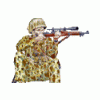







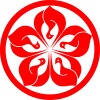
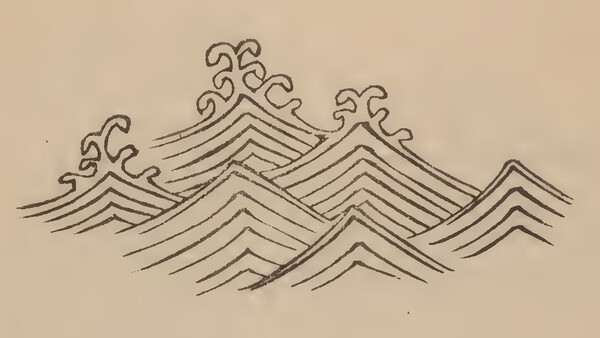
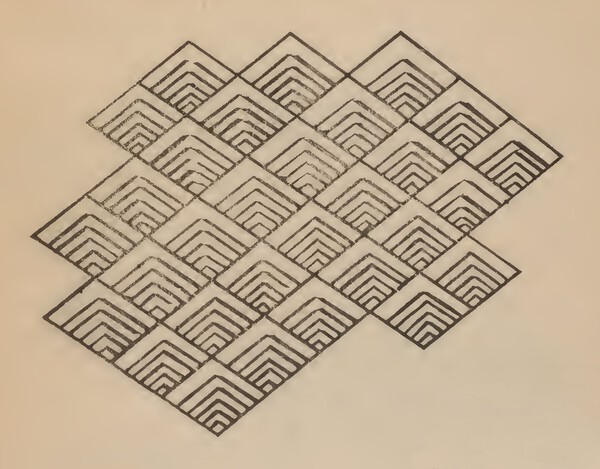
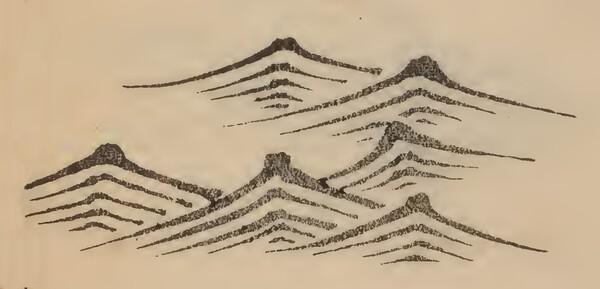

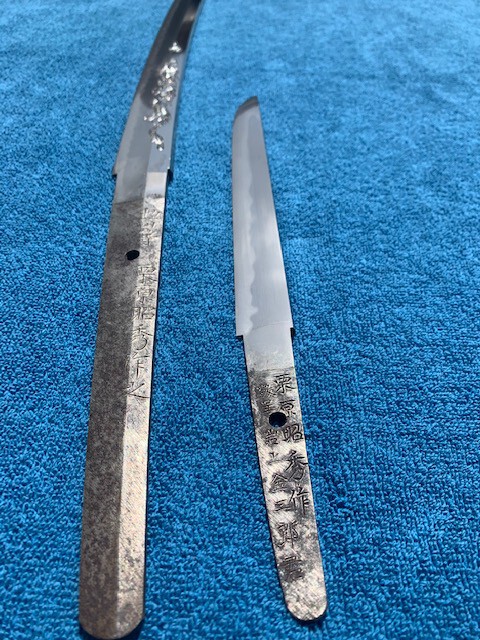
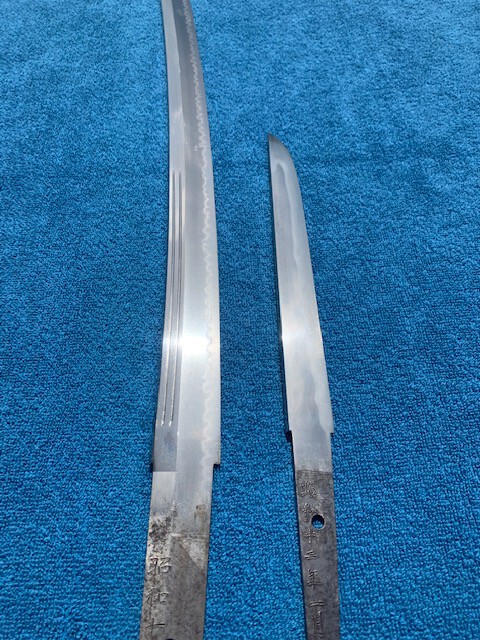
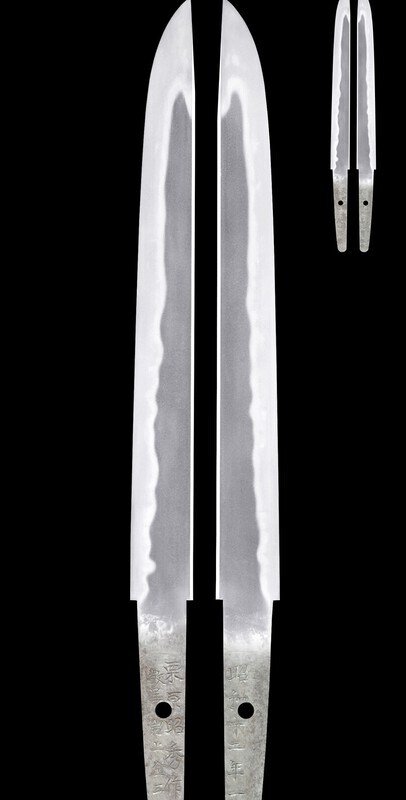
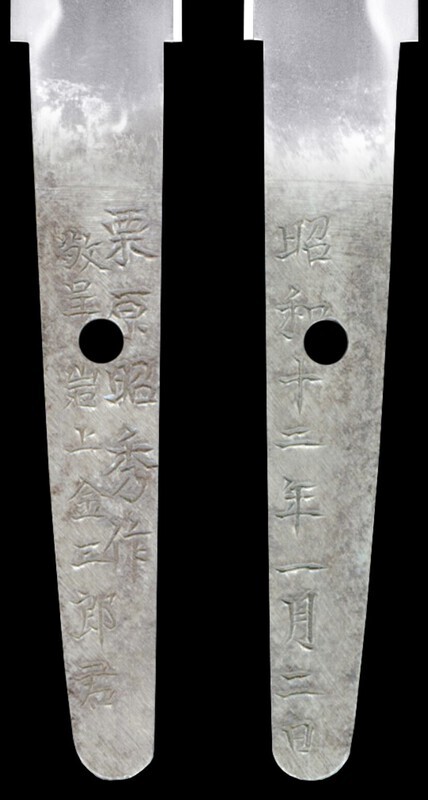


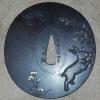
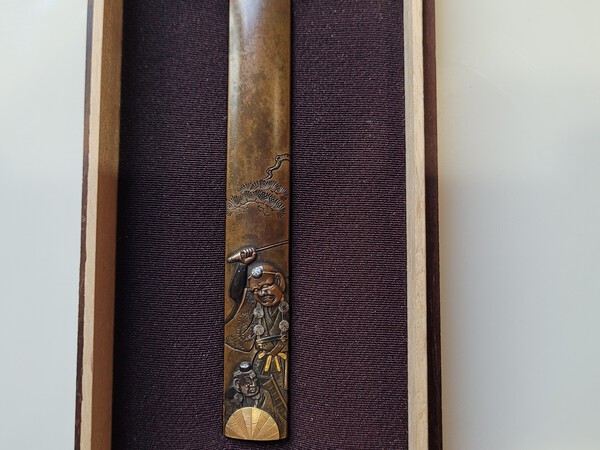
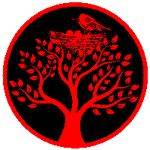


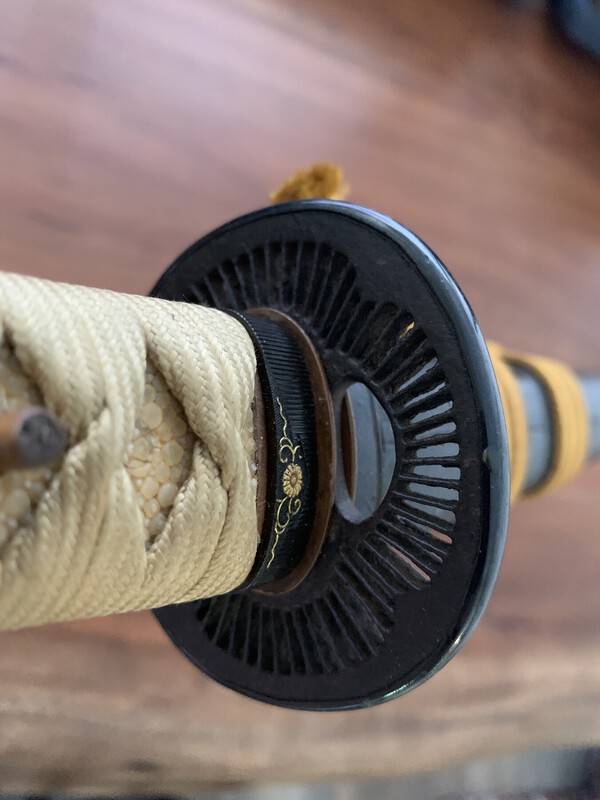
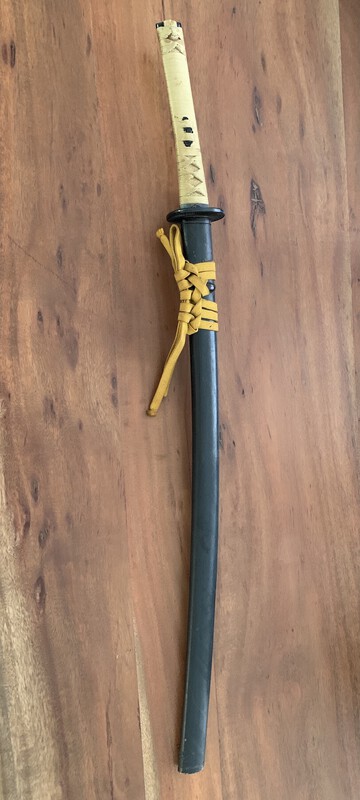
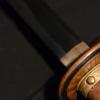





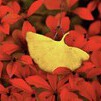
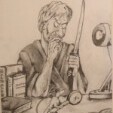
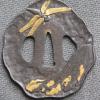
.thumb.jpg.1b2583c1b7b543a6cc4529488dbb4a50.jpg)
.thumb.jpg.e0b686e8735c234ed8727b69da2800c7.jpg)
.thumb.jpg.2217bb0cc20562377c3a186181bd1a2d.jpg)
.thumb.jpg.86da3a6317bb24a9fdc46541f4be569a.jpg)
.thumb.jpg.c8b1698bd185c663ebad409cea42b32c.jpg)
.thumb.jpg.e16a1962bc6b001bb07dfadab534ef07.jpg)
.thumb.jpg.9f4ddd3ee584b3a0b5b40caf2b6a703d.jpg)
.thumb.jpg.a7b9b9cb72333fe58eda66773cc09bbd.jpg)

